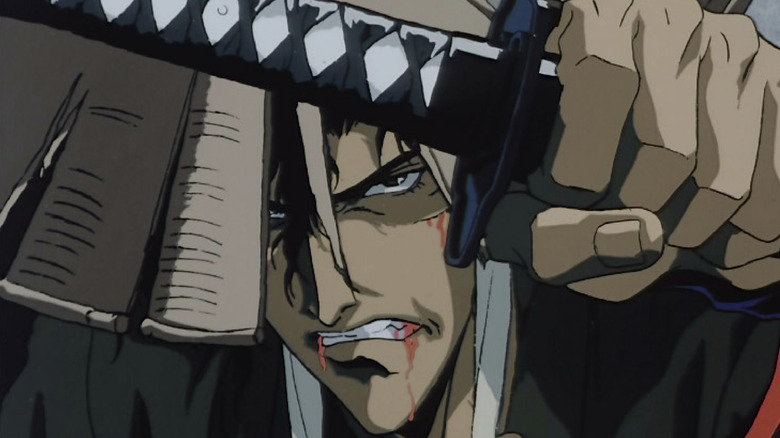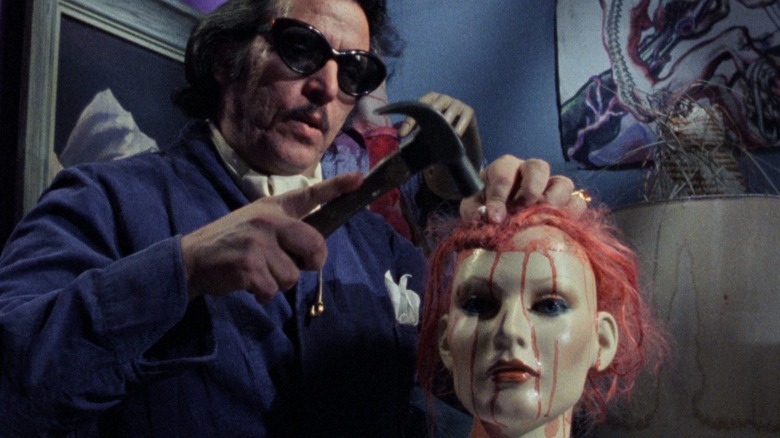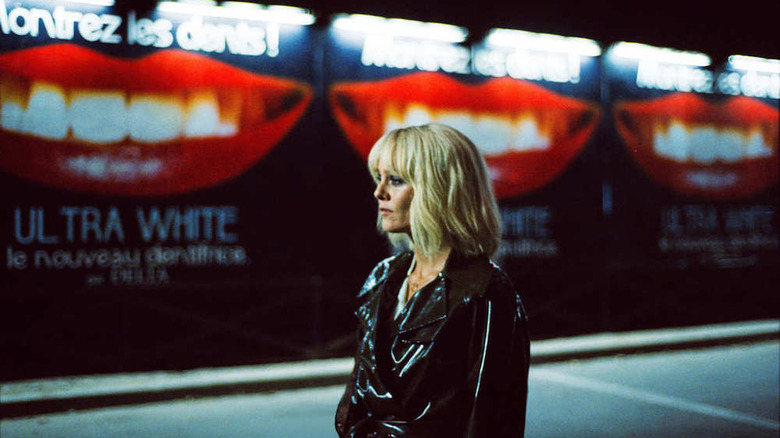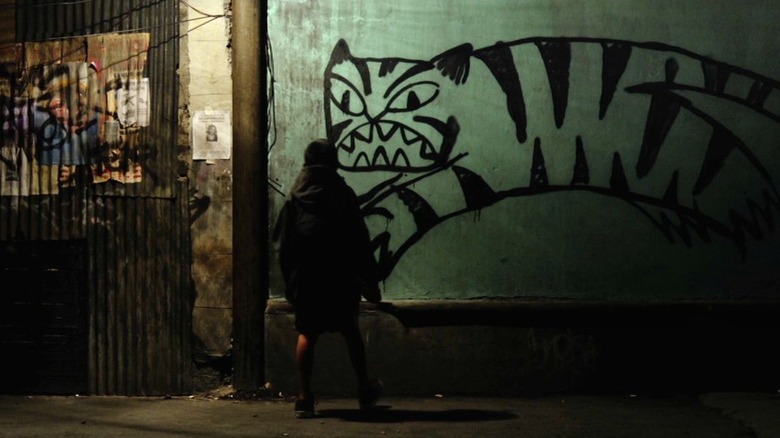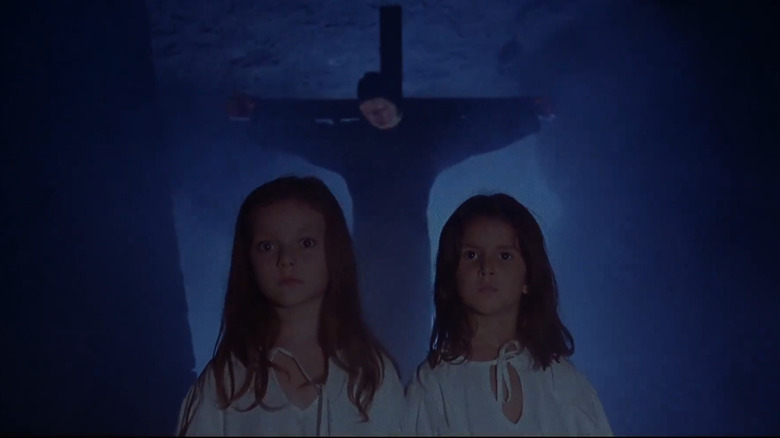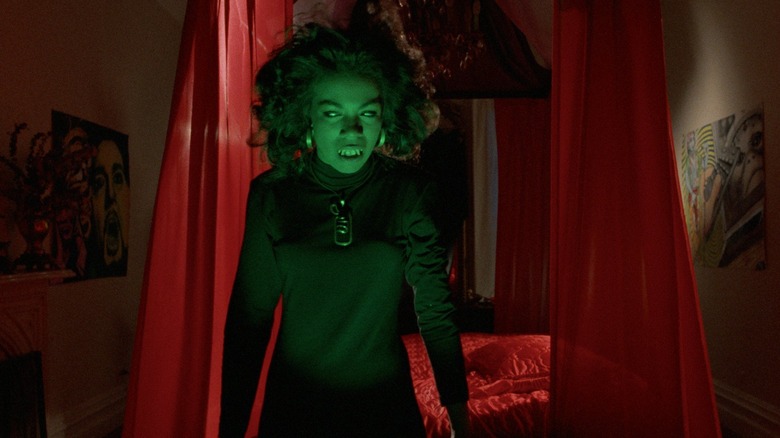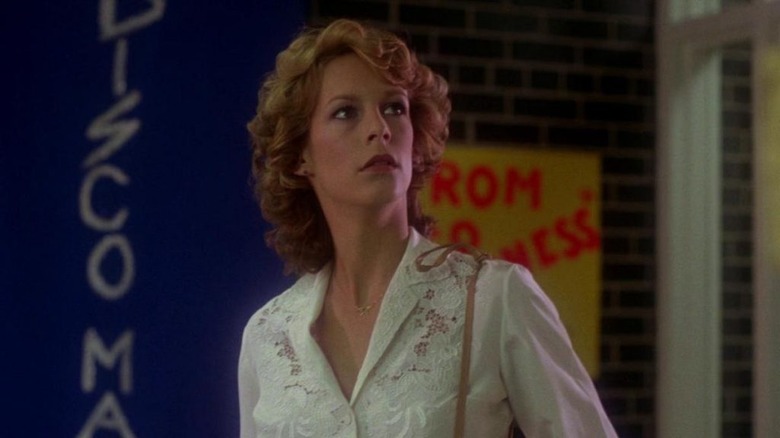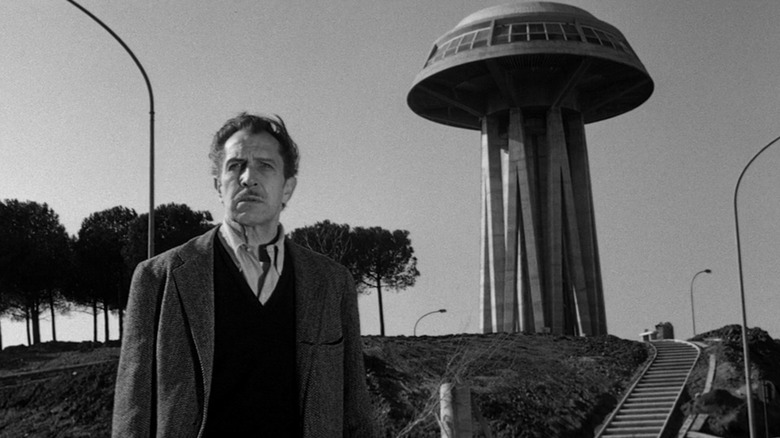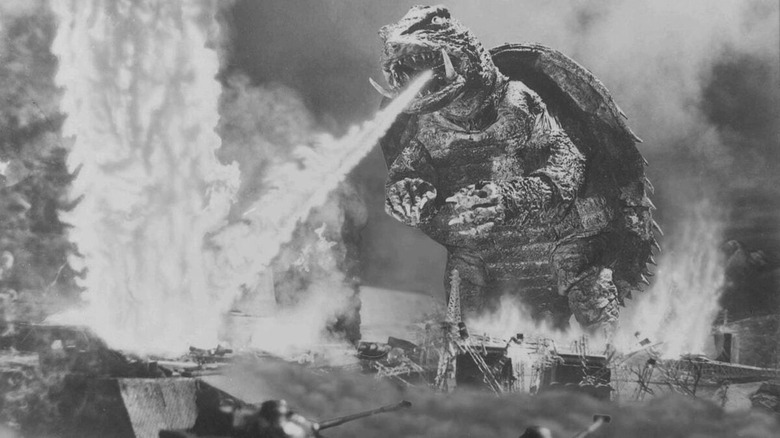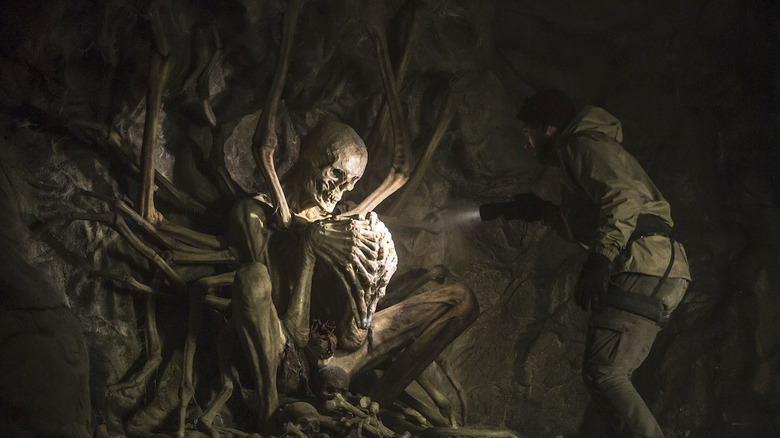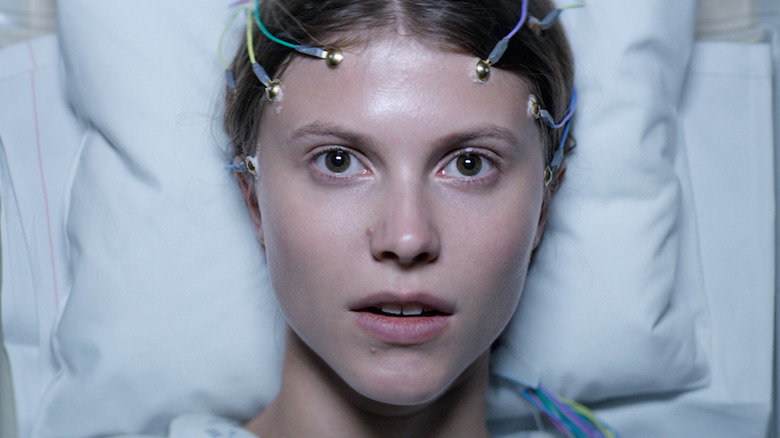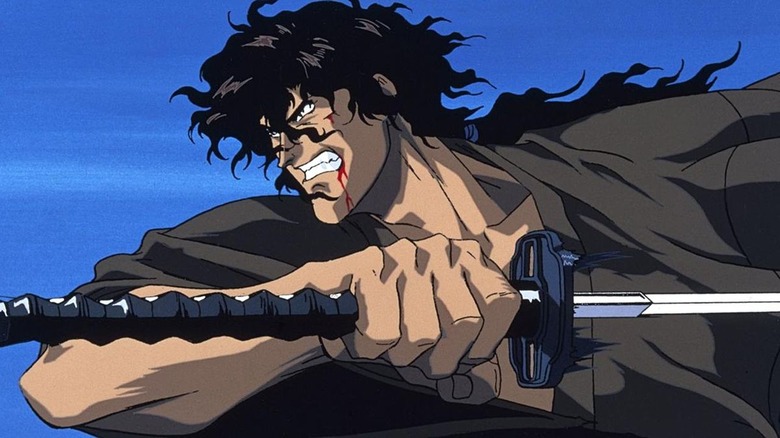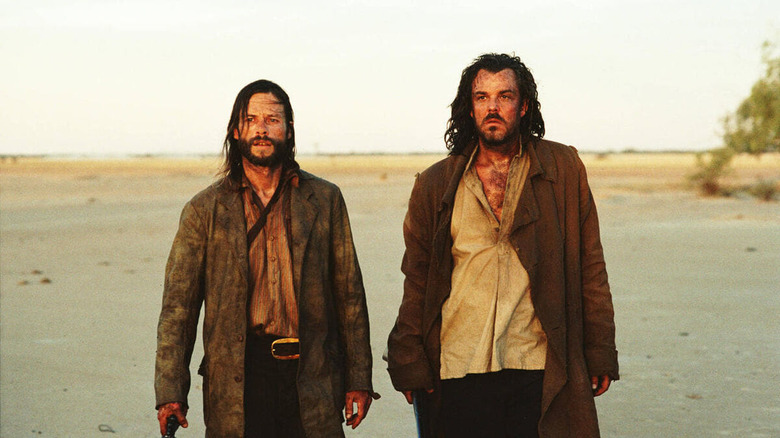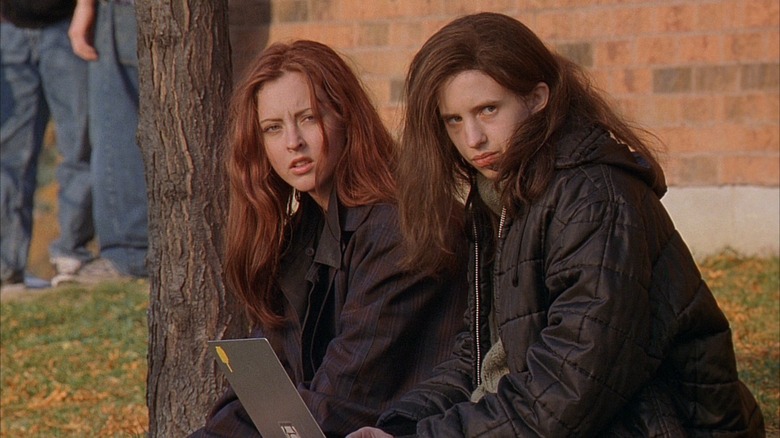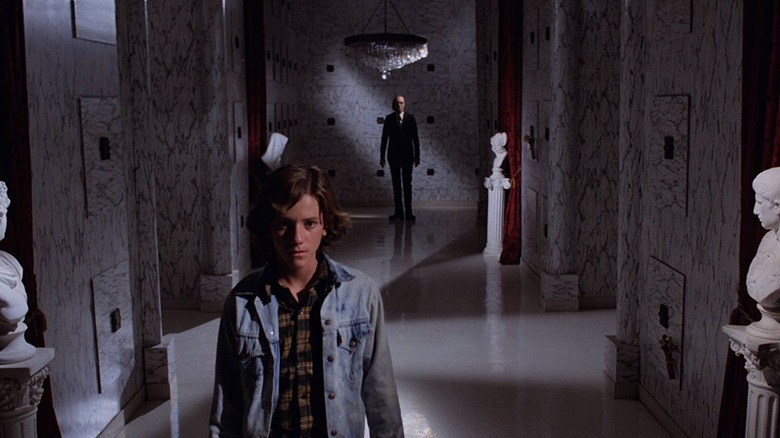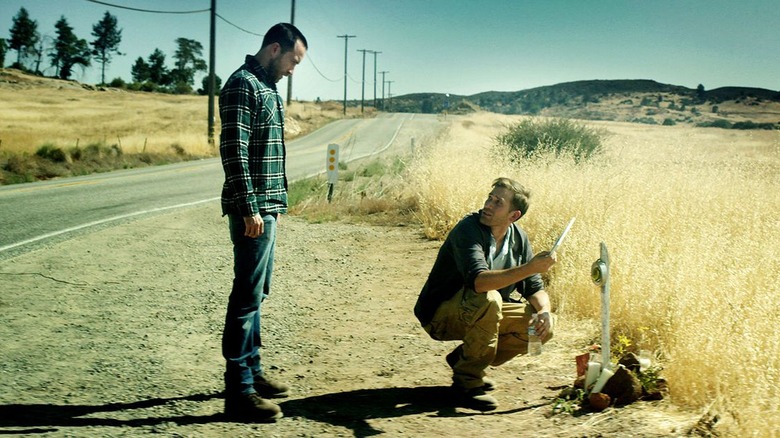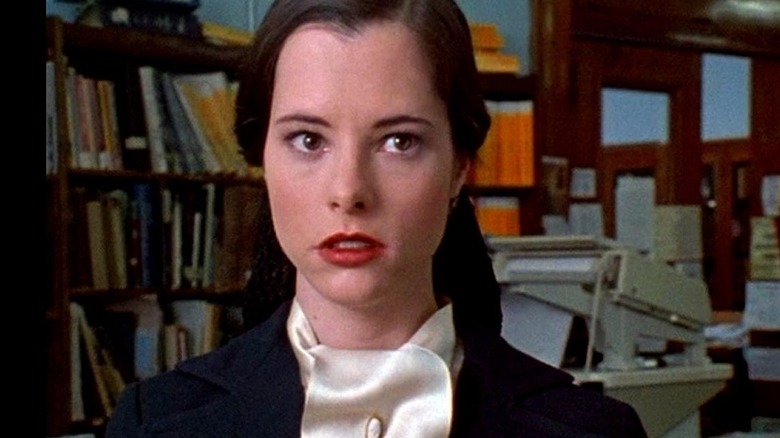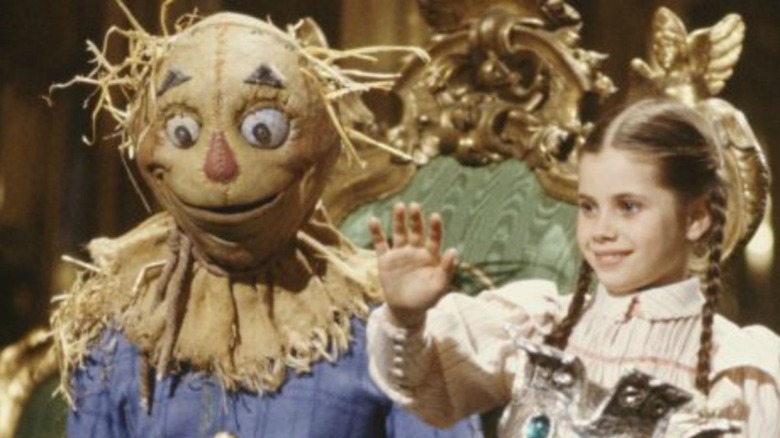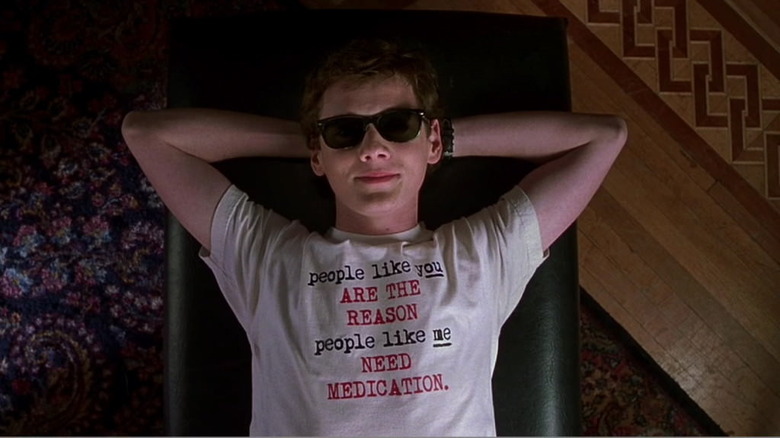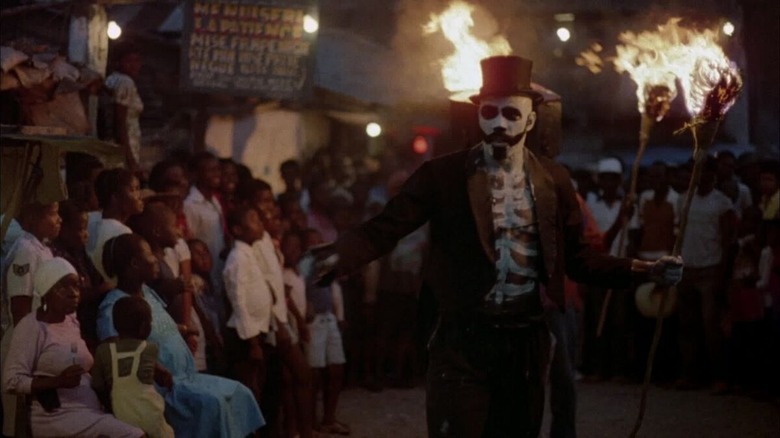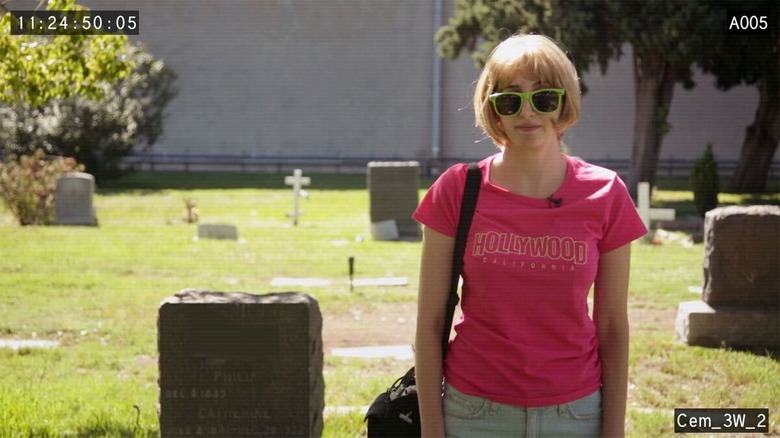21 Hidden Gems Not On Netflix But Streaming Elsewhere
With so many streaming options, each having a catalog of hundreds if not thousands of titles, where do you begin? Even looking beyond industry frontrunner Netflix, there is a ton of riveting entertainment — both new and old, some of it free — to keep you binging. But admittedly, combing through A-Z search listings can be both exhausting and intimidating.
Streaming is a good opportunity to remind yourself that the "shiny new series" du jour isn't always your best option. Explore decades-old movies, anime, foreign cinema and more, and you may discover your next favorite film or show. Scare yourself with a good horror film; select a director or actor and make your way through their entire catalog; finally give a chance to that "secret shame" movie that it seems like everyone has seen except you.
With this in mind, below is a breakdown of some hidden gems on Hulu, HBO Max, Amazon Prime and niche destinations like Shudder and Criterion; no matter where your subscriptions may reside, something is waiting for your discovery.
Maniac (1980) available on Shudder, Amazon Prime, and free with ads on Tubi and VUDU
"Maniac" arrived early in the slasher craze, just two years after John Carpenter's classic "Halloween" and the same year as the original "Friday the 13th." But unlike those movies, which encourages us to see events through the eyes of the victims, "Maniac" makes its audience spend the entire movie with titular maniac Frank Zito (Joe Spinell, who also wrote the story and co-wrote the script).
The film follows Frank as he mutters to himself, seemingly having conversations with his dead mother that he gives voice to (the parallels to "Psycho" are significant and purposeful), goes out to kill sex workers, young couples, and nurses, scalps the women and places the mementos on mannequins that adorn his apartment, and somehow begins a romance with beautiful photographer Anna (Caroline Munro). It's a movie that's equally terrifying for its incredibly well-crafted horror sequences and its portrait of Frank as a man who can be charming and jovial one moment, and a frantic and murderous maniac the next.
The romance aspect of the movie makes it even more interesting, as (spoiler) Anna becomes the final girl of the film even though she is not the narrative focus. And the conversations that Frank and Anna have about the power of photography to capture someone and make them yours are thematically rich, especially in the context of Frank's mannequin collection, which seems to be his attempt to make the women he kills "belong" to him.
Knife + Heart (2018) available on Shudder
"Knife+Heart" is a true neo-giallo film. The film begins with a highly stylized, very graphic, killing by someone wearing a mask and black leather gloves that the rest of the movie then seeks to identify, while the killer continues to pile up bodies. What makes "Knife+Heart" special, besides the gorgeous visuals that beautifully evoke its late 1970s period setting, is that the story takes place in the world of gay porn.
The film centers on Anne (Vanessa Paradis), a producer and director, questioned by the police after the murder in the opening scene because the victim was a regular actor in her films. This inspires Anne to create a movie based on the investigation, delightfully titled "Homocidal." But soon more of her actors turn up murdered, leading to her own investigation after the police haven't managed to turn anything up or protect her community. The investigation leads Anne out of town to an ornithologist who speaks of mystical birds, adding a touch of the supernatural.
It's a beautifully shot movie that delivers on all the genre thrills you could want from a horror movie. The unique setting, and a subplot about Anne trying (and failing) to get her girlfriend back, make it a unique horror project centered on entirely on LGBT characters.
Tigers Are Not Afraid (2017) available on Shudder
"Tigers Are Not Afraid" is a hard movie to categorize — and this is a good thing.
It has elements of horror (both supernatural and all-too-human) fairy tales, children adventure stories, and crime dramas. Then it brings all those elements together perfectly to tell the story of a group of children (all of whom have lost their parents to cartel violence) who become the targets of a cartel leader because they've stolen his phone, which may or may not contain incriminating evidence.
Writer/director Issa López does an impressive job of placing the audience firmly with the children as they act like real kids with one another, finding time for play while their world is seemingly hostile to them at every turn and comforting one another as best they can. This allows the audience to really care for them and make the moments when they are in danger that much more emotional and viscerally affecting.
The film is in the tradition of things like "Pan's Labyrinth" and Stephen King novels in the way it brings children into a fantastical world just beyond our own to escape the horrors of their reality, as the kids are brought together by a world of human and supernatural evil. But far from complaining that the work is derivative, both Guillermo del Toro and King, along with yet another star fantasy and horror writer Neil Gaiman, have all praised the film.
Dark Waters (1993) available on Shudder and free with ads on Tubi
Not to be confused with the 2019 "Dark Waters" film directed by Todd Haynes and starring Mark Ruffalo as a lawyer taking on a polluting corporation, this hidden gem from 1993 is as yet the only feature film directed by writer/director/multimedia artist Mariano Baino (though his second feature is currently in post-production) and centers on a young woman's trip to a mysterious convent on an island.
The story begins when Elizabeth (Louise Salter) returns to the island where she was born after the death of her father, but things are clearly not quite as they should be. She isn't greeted by her friend that she had expected to spend time with, and she soon discovers strange catacombs filled with terrifying artwork depicting monsters under the convent. The film then follows her investigation, but it's more interested in the feelings of uncertainty and Lovecraftian cosmic horror of an impenetrable otherworldly mystery than any firm answers.
"Dark Waters" is a movie that works more on atmosphere and ambient dread than any specific horror sequences, though it does offer some solid jump scares and frightening images. It's a movie for those times when you're more interested in getting lost in a beautifully realized, albeit unnerving, reality.
Def by Temptation (1990) available on Shudder and free with ads on Tubi
"Def by Temptation," which like "Dark Waters" is the only feature film from its delightfully-named writer/director James Bond III, is a wonderfully specific movie. It follows a young minister in training named Joel (Bond) as he visits his friend K (Kadeem Hardison) in New York and encounters a beautiful woman who turns out to be a succubus.
It's a beautifully shot movie, with cinematography by Ernest R. Dickerson who went on to direct the cult classic "Bones," and it manages to weave together influences from Italian horror and blaxploitation to create something wonderfully unique. The scenes where the audience sees the succubus in action are some of the most sumptuously filmed scenes of horror ever put to screen, and they're contrasted with the dark and dingy streets of the city and the dive bars where K takes Joel. Beyond its visual style, however, the movie is worth seeking out (and celebrating) for its focus on black male friendships, sexuality, and Christianity in the modern world. Themes that it treats with great respect and consideration without ever drawing away from the supernatural thrills of its main plot.
Prom Night (1980) available on Shudder, Peacock, and free with ads on Crackle, VUDU, and Tubi
The original "Prom Night" is a treat among early slashers. The movie spends the vast majority of its runtime, after a disturbing opening flashback, simply following the lives of its teen protagonists, allowing the audience to get to know them and genuinely care for them before they start being, well, slashed.
The movie opens with a group of tweens accidentally killing a young girl and making a pact to never speak of what happened, before transporting us six years later to show us these characters preparing for their prom. We then spend most of the movie with these characters on what is a pretty normal day, learning about their romantic troubles and rivalries. But soon enough, strange and ominous things begin happening, like some of the girls' pictures in the yearbook being defaced. And then, just as prom begins, the movie offers some surprisingly fun disco dance sequences, and the killing starts.
The mix of disco aesthetics and a slasher on the loose make for some of the most visually interesting, and disturbing, images that early slashers have to offer. Our time with these characters results in the audience caring about whether they make it to the end of the movie alive.
Last Man on Earth (1964) available on Amazon Prime and free with ads on Tubi
"The Last Man on Earth" is the first cinematic adaptation of Richard Matheson's book "I Am Legend," which was subsequently adapted into "The Omega Man" starring Charlton Heston in 1971 and, you might have figured this out already, "I Am Legend" starring Will Smith in 2007. Like the two films that followed, "The Last Man on Earth" is anchored around a fantastic movie star performance, this time from Vincent Price.
Price plays doctor Robert Morgan, who walks the desolate world of a post-apocalyptic Los Angeles (though the film was shot in Italy) hunting the vampiric creatures that are the world's only other inhabitants. Or so he thinks. One day he sees a woman while out hunting and brings her to his home so that they can help one another survive, and from there the plot becomes an emotionally potent mystery.
But what really makes "The Last Man on Earth" the best of the "I Am Legend" adaptations isn't its thrilling, heartbreaking story of the future, but flashbacks that show us how humanity arrived at this point. Extended flashback sequences show Dr. Morgan and his family as the new plague takes hold, and the horrors that ensue on society and its mental well being.
Gamera: the Giant Monster (1965) available on Amazon Prime and free with ads on Tubi
"Gamera: the Giant Monster" is undeniably a film made in the wake of "Godzilla," an attempt to cash in on the earlier movie's popularity, but "Gamera, the Giant Monster" manages to offer its own joys and was so successful that it set up a long running franchise as well. The movie begins when a nuclear bomb is accidentally dropped in the Arctic (it's a silly movie, but that's part of the charm) awakening the ancient monster Gamera, a giant turtle with large tusks and an ability to fly and breathe fire.
Soon after Gamera's awakening (and escape from the military forces that unleashed him), the creature lands in Japan where it destroys a lighthouse but saves a young boy named Toshio (Yoshiro Uchida) who develops a bond with the giant turtle. As the movie unfurls, Japanese authorities work to rid the country, and the world, of the monster whose need to feed on energy leads it to attack power plants and major cities. But Toshio, who somehow manages to gain an audience with the scientists who are working on plans to stop Gamera, begs them to understand that the giant turtle isn't evil, just misunderstood.
It's a delightful kaiju film, and one far more interested in the joys of big monsters smashing stuff and breathing fire than any themes of human hubris.
The Empty Man (2020) available on HBO Max
"The Empty Man," loosely based on the comic of the same name by Cullen Bunn and Vanesa R. Del Rey, is the first narrative feature from longtime David Fincher documentarian David Prior, and the influence of Fincher is easy to see — in all the best ways. Prior has clearly learned how to compose an image and extract tension from a scene, but what makes "The Empty Man" interesting is that, unlike many of Fincher's most suspenseful and masterful films, it's not (or at least not only) a crime film, but a supernatural horror movie.
The movie opens with an over-twenty-minutes long sequence that introduces a fairy tale version of a horror story about a group of American hikers in Bhutan in the 1990s; the viewer is then transported to the present, where former detective James Lasombra (James Badge Dale) is investigating the disappearance of a teenage girl in connection with a story about the "empty man." The two tales collide towards the end of the movie, but the thrilling ride into the mystery of who, or what, the "empty man" is, remains far more exciting than any answers the movie could hope to provide.
"The Empty Man" was a victim of the COVID-fueled 2020 theatrical collapse and didn't get much attention upon release, but more and more critics are finding and making the case for its excellence, including Youtube's Chris Stuckman, who argues that the movie "deserves a cult following."
Smithereens (1982) available on HBO Max, Criterion Channel
"Smithereens" is an important first in a lot of ways. It was the first independently-produced American movie to be invited to compete for the illustrious Palm d'Or award at the 1982 Cannes Film Festival, it's the first film written by Academy Award winner Ron Nyswaner, and it's the first film from "Desperately Seeking Susan" and "Sex and the City" pilot director Susan Seidelman. But perhaps ironically, despite being the launchpad for these prestigious careers, and breaking ground for American independent cinema abroad, "Smithereens" is a dirty movie (no, not like that).
The story focuses on Wren (Susan Berman), a young woman who has run away from her home in New Jersey to live in New York and find a way into the punk scene. But the scene has moved to Los Angeles and Wren struggles to make a name for herself among the dwindling numbers of punks who might make it in New York. She meets a young man named Paul (Brad Rinn) who is making a stop in New York on his way to New Hampshire and develops a crush on Wren, but she just takes advantage of him and his offerings of a place to stay while she attempts to figure out what her next move is.
"Smithereens" is largely a portrait of a narcissistic young woman desperately trying to make a name for herself, no matter who she needs to use on the way. But instead of being any sort of rise and fall story, it only ever shows Wren's failures and the cruelty of the world of 1980s New York as a place that is cold, unforgiving and full of people like Wren who are only interested in self-advancement. Despite the de-romanticization of being young and in New York, the movie is oddly charming, due in large part to Berman's great charisma, and even if (or rather when) Wren is impossible to root for, she's still riveting.
Thelma (2017) available on Hulu and free with ads on Tubi
Joachim Trier would go on to be nominated for the Academy Award for Best Original Screenplay for "The Worst Person in the World," which he also directed and was also nominated for Best International Feature. But also worth tracking down is his previous narrative feature, "Thelma."
Following the titular Thelma (Eili Harboe) during her first year away from home at college, where she meets the beautiful Anja (Kaya Wilkins) and begins to develop a relationship, "Thelma" is a wonderfully told story of young women in love, as well as an effective horror movie. As the film goes on, we learn that Thelma has telekinetic powers which seem to be tied to her desires, particularly for Anja. The movie then becomes a mystery as Thelma attempts to understand these powers, their origin, and if her parents have been keeping secrets.
It's a movie that manages to offer genre thrills without ever going over the top and losing the love story at its core.
Ninja Scroll (1993) available on Hulu
"Ninja Scroll" is a very big deal within certain circles; among anime fans it's considered a classic of the 1990s on the same level as "Ghost in the Shell," and was an influence on the Wachowskis, leading director Yoshiaki Kawajiri to contribute a short to the "Animatrix." But it's still not as widely seen as it deserves to be; it is now on Hulu and ranks among their best animated offerings.
The story of "Ninja Scroll" is simple and exists primarily to set up the movie's stylized action sequences. It follows Kibagami Jubei (voiced by Koichi Yamadera in Japanese and Dean Wein in English), a wandering mercenary, as he takes on the "eight devils of Kimon," each of whom have specific supernatural abilities. Jubei then teams up with ninja Kagero (voiced by Emi Shinohara in Japanese and Wendee Lee in English), the sole survivor of a ninja clan attacked by the devils, and Dakuan (voiced by Takeshi Aono in Japanese and Steve Apostolina in English), a government spy.
The film is a hard edged, pulpy genre flick with some unsavory scenes (content warning for sexual assault), but the astoundingly animated action scenes full of magical powers and gorgeously realized arterial blood spray make "Ninja Scroll" worth seeking out.
The Proposition (2005) available on Peacock and free with ads on Crackle, VUDU, Tubi
The first film written by legendary Australian musician, screenwriter, novelist, and actor Nick Cave, "The proposition" is every bit as dark, horrifying and oddly poetic as his best music.
One both one of the best Aussie Westerns ever made — and perhaps among the best Westerns of the 21st century — the film follows Charlie Burns (Guy Pearce) as he hunts down his older brother Arthur (Danny Huston), who is wanted by the law. Charlie is motivated to find his older brother by the cruel Captain Morris Stanley (Ray Winstone), who threatens to kill the youngest Burns brother Mike (Richard Wilson) if Charlie does not bring in Arthur.
It's a classic Western set-up, and director John Hillcoat does a beautiful job bringing it to life with sweeping shots of the Australian outback, thrilling shootouts, and brutal scenes of corporal punishment. The film is also distinctly Australian; it's a story about the strange colonial history of a land that began as a penal colony but later became "civilized" with great violence from the state, against both the original prisoners and their descendants and the indigenous people of the continent. "The Proposition" certainly isn't a breezy watch, but it's a must-see nonetheless.
Ginger Snaps (2000) available on Peacock, Shudder, and free with ads on Crackle, VUDU, Tubi
"Ginger Snaps," like "Thelma," is a coming-of-age supernatural horror movie. But instead of telekinetic powers awoken by desire, Ginger (Katharine Isabelle) begins to experience bodily changes after an encounter with a sizable, supernatural wolf. The movie's metaphorical interest in menstruation and how it changes a young woman's perception of herself and the way she is perceived by others is handled deftly, allowing the story to make Ginger an empathetic monster.
Along with Ginger's transformation, the movie follows her younger sister Brigitte (Emily Perkins), concerned by the changes her sister is exhibiting. At the start of the film, the two are best friends; as Ginger grows more confident and aggressive in her monstrosity, the relationship between the sisters is fractured, perhaps irrevocably.
"Ginger Snaps" is a terrific thriller, a great teen flick, and a solid exploration of sisterhood. It's sure to please lots of different audiences for different reasons, and it's appropriate that it is a horror film, because if you watch it once you'll be cursed to spend the rest of your days talking up one of the all-time great "Have you ever heard of a movie called ... ?" movies.
Phantasm (1979) available on Peacock, Shudder, and free with ads on Crackle, VUDU, Tubi
There are a very good amount of science fiction horror movies, from '50s classics like "The Invasion of the Body Snatchers" to '70s and '80s effects showcases like "Alien" and "The Thing" to modern hits like "A Quiet Place," but there aren't quite as many fantasy horror movies. "Phantasm" is one of the few, and one of the best.
The story centers on young teen Mike (A. Michael Baldwin) who discovers a mysterious tall man (credited in the film simply as "The Tall Man" and played by Angus Scrimm) who is doing something to the bodies at a cemetery and mausoleum, so he attempts to investigate further. In the course of his investigation Mike discovers that the Tall Man is aided by hooded, jawa-like dwarves, and employs a magical flying sphere weapon that can dispense blades and drills. Mike has to convince his brother Jody (Bill Thornbury) and their friend Reggie (Reggie Bannister) of the evil deeds of the Tall Man and get them to assist in his investigation and eventual fight against the mysterious man from another world.
"Phantasm" is a great low-budget movie with big ideas and big ambitions that the filmmakers bring to life with simple, convincing practical effects. Released the same year as "Alien," it works as a great companion piece to that higher budget science fiction horror movie as a scrappy, independently-financed fantasy horror cult classic.
The Endless (2017) available on Peacock, Shudder, and free with ads on VUDU, Tubi
Justin Benson and Aaron Moorhead directed episodes 2 and 4 of the debut season of "Moon Knight," but before joining the MCU the duo made a number of wonderfully unique, brain breaking, sci-fi horror movies. Perhaps the best of these is their 2017 cosmic horror time loop masterpiece "The Endless."
"The Endless" follows brothers Justin (Benson) and Aaron Smith (Moorhead), who return to the community where they grew up after they receive a mysterious tape. Justin remembers the community as a cult, but Aaron thinks that it was a healthy and supportive commune. Upon their return, it seems that none of the people they knew have aged in the decade since they left, and this is only the tip of the oddity iceberg. As they learn the community has been playing tug-of-war with an invisible (or at least unseeable in the night sky) entity, Justin discovers a variety of time loops in the area surrounding the camp, and on a fishing outing the brothers seem to encounter a monolithic creature under the local lake.
"The Endless" is a complicated film, but one that invites the audience into its strange and confusing world so comprehensively that it becomes the best sort of film — one that could provoke hours of conversation and interpretation. Watch it with a friend.
Party Girl (1995) available on Peacock and free with ads on VUDU, Tubi
Parker Posey seemed to arrive on the scene as a fully-formed icon, so it's somewhat surprising that she ascended to that status mostly through supporting roles in films like "Dazed and Confused," "Josie and the Pussycats," and "Scream 3." Alongside those projects, however, she was an indie darling blazing a path in films like the absolutely lovely "Party Girl."
The film follows Mary (Posey), whose life of hard partying is interrupted when she is arrested. Mary calls her godmother Judy (Sasha Von Scherler), who agrees to bail her out as long as Mary pays it back by working in the library where Judy works. Mary is not at all interested in becoming a librarian, but over the course of the film she develops a proficiency for the Dewey Decimal System (remember, this film takes place in the '90s), and the ways in which the library can be a resource for herself, friends, and love interest Mustafa (Omar Townsend).
"Party Girl" doesn't tell a complicated story, or one that's particularly original, but it operates with so much care for its characters that Posey has room to shine brightly.
Return to Oz (1985) available on Disney+
Most of the movies on Disney+ can't exactly be called "hidden gems," as the service is filled with animated classics of the 20th century and two of the biggest franchises of all time in Marvel and Star Wars. But look closer and you can uncover a handful of live action Disney flicks from later in the 20th century that aren't nearly as well known as their streaming platform siblings; one of the best, strangest, and scariest is 1985's "Return to Oz."
A high-profile sequel that arrived 46 years after its predecessor and barely resembles it, "Return" jettisons much of the whimsy of "The Wizard of Oz" for a grittier, steampunk-like nightmarish aesthetic fueled by stop-motion animation and unsettling rear-projection scenes. The only significant returning character is Dorothy (now played by a young Fairuza Balk), somehow younger than she was in the first film.
While the original certainly had some frightening characters and images, including the Wicked Witch of the East and her flying monkeys, "Return to Oz" is almost relentlessly terrifying. Dorothy is returned to Oz because her aunt and uncle have sent her for shock treatment, but when lightning strikes the asylum, she arrives in Oz, discovering it has changed for the worse as terrifying creatures with wheels instead of hands and feet roam the land, enforcing the rule of the evil Nome king.
Of course, Dorothy manages to gather a group of new friends and save the day, but the movie is shockingly dark for a children's film, let alone the follow up to one of the most joyous, beloved movies of the classic Hollywood era. "Return to Oz" is a surprising Disney+ discovery waiting to be made, and is worth seeking out as it might just be one of the best sequels you've (probably) never watched.
Charlie Bartlett (2007) available on Amazon Prime and free with add on Tubi
Arguably the best remaining document of the formidable, gone-too-soon talent of Anton Yelchin, this Robert Downey Jr.-co-starring drama harnesses a '70s Hal Ashby vibe while allowing the Russian-born actor to develop perhaps his most fully-fleshed-out role.
The film follows Charlie (Yelchin), a wealthy young man who, after he is kicked out of a number of private schools, is sent to a public school and quickly becomes the school's de facto therapist by offering to have meaningful conversations with students in the bathroom, and supply them with drugs when he thinks they might help. Charlie has been seeing psychiatrists for years and has perfected his technique of attaining prescriptions, allowing him to be fully stocked with a variety of drugs that may be of use to his fellow students struggling with a variety of mental health issues. Of course, things can't remain so simple, and the movie takes a turn when one student attempts to overdose with drugs that Charlie supplied.
Despite such dark turns, the movie maintains an impressively light tone while commenting on the issues of mental health. In addition to Yelchin and Downey (who plays the principal of Charlie's new school), the film features memorable work from Kat Dennings and Hope Davis.
If you or anyone you know is having suicidal thoughts, please call the National Suicide Prevention Lifeline at 1-800-273-TALK (8255).
The Serpent and the Rainbow (1998) available on Shudder
Wes Craven is a horror legend for bringing us the cult classics "The Last House on the Left" and "The Hills Have Eyes" and launching two of the most enduring horror franchises with "A Nightmare on Elm Street" and "Scream," but this lesser known effort, viewed as a dud upon its release, deserves another look.
"The Serpent and the Rainbow" is loosely based on the Wade Davis book of the same name, which chronicles his investigations into cases of zombies in Haiti. The movie takes its source material and turns it into something beautifully atmospheric and horrifying, with doctor Dennis Alan (Bill Pullman) sent to Haiti by a corporation that seeks to capitalize on underground drugs that render its users catatonic but (somewhat) alive. In Haiti, Dennis is partnered with beautiful doctor Marielle Duchamp (Cathy Tyson), and their investigation takes them through a world of magic equally alluring and frightening. Alongside this dive into the world of voodoo and zombies, the film also tackles the political horrors Haiti faced in the early 1980s, as Dennis and Marielle are hunted down by Captain Dargent Peytraud (Zakes Mokae), who doesn't want them stirring up trouble.
Craven brought his immense talent in creating beautifully terrifying dreams to this little-seen project, crafting tense horror setpieces while building a true sense of dread; the resulting film ranks among his best, and is a must see for horror enthusiasts.
I Blame Society (2020) available on Shudder and free with ads on Tubi
There's truly nothing else like this film, which begins as documentary found footage depicting a young woman named Gillian (writer/director/star Gillian Wallace Horvat) who is interested in making a movie, but soon becomes something far less common, and more unsettling.
One day, when Gillian is on a hike with her friend Chase (Chase Williamson), she accidentally kills him by sharing food that he's deathly allergic to. But it's in this moment that she finds a new focus for her film: murder. Gillian then begins to stalk and break into people's homes, often engaging them in conversation before taking their lives on camera for her movie. But despite this horrifying, "Man Bites Dog"-like premise, Horvat never loses the improvisational comedy feel that initially feels so inviting. It's an incredible feat for any movie to make such a hard left turn and pull it off, but it's especially amazing for a micro-budget found footage horror film, a conceit that has become overused and abused in the decades since "Blair Witch" blew it up.
"I Blame Society" is a movie equally appealing to horror fans, comedy enthusiasts, and anyone interested in making movies. It's a wonder that this is Horvat's first feature, and hopefully there are many more ahead if this is an indication of her talents.
